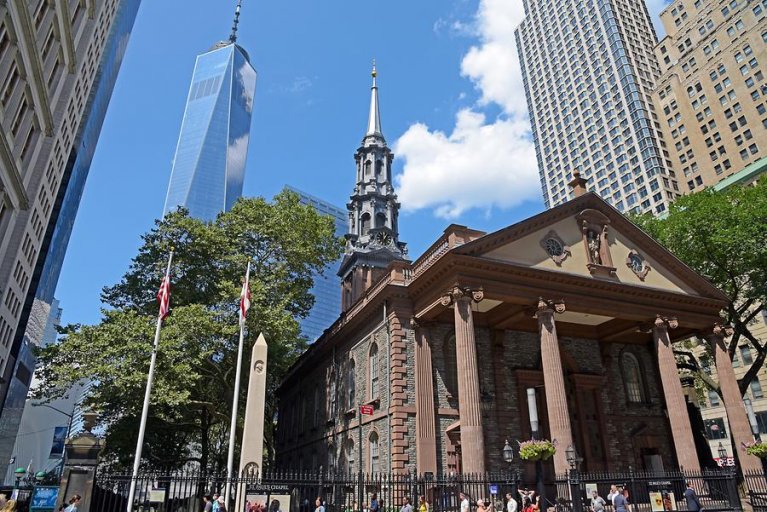Share a story
History
St. Paul’s Chapel opened in 1766 as an outreach center for Trinity Church’s expanding congregation. It was a “chapel-of-ease” for those who did not want to walk a few blocks south along unpaved streets to Trinity. A decade later, the Great Fire of 1776 destroyed the first Trinity Church, but St. Paul’s survived, thanks to a bucket brigade that ran from the Hudson River up to the chapel’s roof.
Until the second Trinity Church was rebuilt in 1790, many, including George Washington, made St. Paul’s their spiritual home. On April 30, 1789, after Washington took the oath of office to become the first president of the United States, he made his way from Federal Hall on Wall Street to St. Paul’s Chapel, where he attended services.
As the city grew around it, St. Paul’s remained a place of worship and sanctuary for unhoused neighbors, industrial workers, and immigrant communities of many faiths.
Today, St. Paul’s is the only colonial-era church remaining in Manhattan, and the oldest public building in continuous use in the borough. The chapel hosts free concerts and cultural programs, continuing its legacy of comfort, inspiration, and transformation. It is home to an active worshipping community and welcomes more than 1 million visitors every year.
Across the centuries, St. Paul’s Chapel has endured as a beacon of hope at the crossroads of history — holding the prayers of all New Yorkers and embodying our deep desire to be bound together in community.
The Little Chapel That Stood
Less than 100 yards from the World Trade Center, St. Paul’s Chapel miraculously survived the destruction of September 11, 2001. In the months that followed, the chapel welcomed thousands of recovery workers.
Shifts were grueling, and responders found respite in the 235-year-old chapel and its churchyard. Rescue crews, police, and firefighters found their way to St. Paul’s to rest and wash up. Volunteers from across the country arrived to offer care for the workers’ weary bodies and souls with food, personal supplies, counseling, and prayer.
During the nine months of ministry that followed, St. Paul’s Chapel became much more than a place to eat or sleep. It became a community of hope.
209 Broadway
New York, NY 10007
United States


